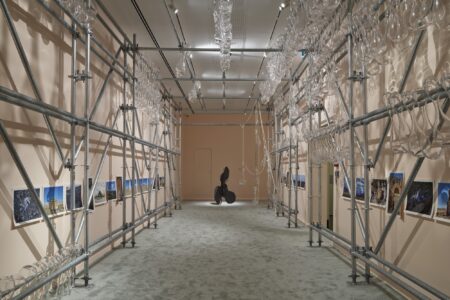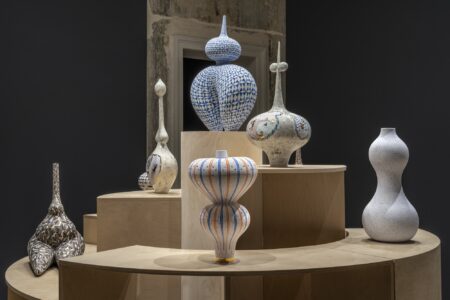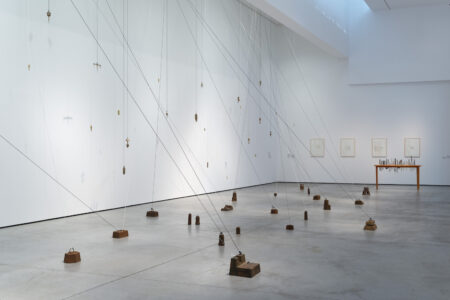SantralIstanbul by Emre Arolat
For Santral, as well as the next Istanbul Contemporary Art Museum, you had to face or you’ll have to face the pre-existences of a complex and stratified town like Istanbul.TLmag: What was and what will be your approach?Emre Arolat: Santralistanbul was a classic re-use and renovation project –...
For Santral, as well as the next Istanbul Contemporary Art Museum, you had to face or you’ll have to face the pre-existences of a complex and stratified town like Istanbul. TLmag: What was and what will be your approach? Emre Arolat: Santralistanbul was a classic re-use and renovation project – a power plant built between the 1910’s and 1950‘s – transformed into a museum, recreational and educational centre. Various studies of the building and its architectural context were combined by the spontaneous sense of place that came into being by the time spent at the site and with deepened investigations. The most prevailing factor of the design principles for the museum building was the motivation of being a part of the place without an engagement to a specific time segment, in contrast to habitual attempts at being contemporary, holding just the current architectural specifications and being disintegrated from the historical context it stands in. The building was designed with the idea that it should keep its existence by being insistently introverted, despite the glorious architectural activity that rises in capitalist cum liberal societies and that changes nearly all buildings into museum objects with its embraced criterions and star architect mechanisms. The conversion of the Antrepo 5 structure into the Istanbul Contemporary Art Museum is without a doubt one of the most exciting projects I’ve worked on. This structure in some aspect will also become a part of the city’s cultural infrastructure, thus becoming an important centre. On the other hand, we have been thinking and deeply criticising or in some cases, cherishing the meaning of “the museum.” We are facing this challenge even more with the transformation of an existing warehouse building that is the Antrepo 5 into the museum. It is a progressive step, making Karaköy’s customs port accessible, which has long been a segregated area in the heart of Istanbul, with no public access since its construction in 1960. For the past decade, Karaköy has been flourishing and has become an up-and-coming neighbourhood. It can now be characterised as one of the most important cultural centres for contemporary art in Istanbul. The new structure will also add to the building’s value. Besides it being “a constructive element for modern Turkish architecture,” as decribed by Sedad Hakki Eldem (a renowned Turkish architect who also worked on the design of the building), the structural grid exposed outside the facade has been the most prominent element of the warehouse building in urban memory. TLmag: In either case, you were confronted with “unfortunate” areas of the town, which are being reread by actions of architecture and by conversions into cultural spaces. What are the differences? Was the operation in the Golden Horn area successfully accomplished? How do you see Karaköy’s future? EA: Both Santralistanbul area and the Karaköy port weren’t complexes at the heart of the urban life but rather places for service; a power plant and an important trade post. After the expansion and evolution of the city, both locations have become very central, gaining increased attention everyday, as much as similar projects all over the world, have been gentrified with their potentials of serving the city by the means of culture and recreation. Some part of the operation at the Golden Horn is accomplished but the transformation has not been yet finished. Many institutions have been established in the area in the form of cultural centres and museums, both governmental and private venues. But beyond that, large commercial and recreational projects are being developed, mainly in the old Golden Horn Shipyard and the left-over parts of Karaköy Port, where our Contemporary Arts Museum is situated. Those properties have just been tendered by the government to private joint ventures. These commercial developments are presupposed to be mixed-use complexes, including recreation, retail, hotels, offices and consisted of both new buildings and renovation pre-existing structures. These developments will create a continuity of urban activity from Karakoy to the end of the Golden Horn – reforming the entire coastline. With the so-called Galata Port project, Karakoy will be another centre of commerce and recreation, in addition to its cruise port function. TLmag: Both projects speak about Istanbul as a city reconquering culture, an effervescent city, the city of great biennials and new spaces for art and design. This was a major trend the last few years. Is this trend still prevalent? Will it increase or stumble? What might be some obstacles? EA: This phenomenon started almost a decade ago and the cultural scene in this city is still flourishing. With the beginning of fall, the art scene in Istanbul has a ‘pick me up’ that runs through the spring. With art fairs like Art International or Contemporary Istanbul, an international crowd gathers in the megapolis to witness innovations in Turkish and foreign contemporary art. Between these two, there is the Istanbul Biennale which I was the curator a few years ago. To be honest, this trend will remain as long as the “culture industry” keeps up with the international scene. Although art finds its roots in anarchist sentiments, in capitalist societies like ours, financial interest keep it moving. Consequently, the resistance and rise of this trend mainly depends on the economic condition of the country, the decline of which would be the main obstacle.
‹ Back






